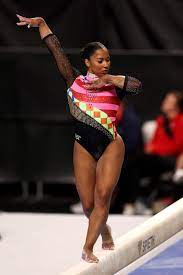Why Is Social Development Important in Childhood?
Social development forms the backbone of a child’s ability to build friendships, express themselves, and understand others. Between the ages of 4 and 12, children absorb critical lessons through interaction—not just from adults, but from their peers. Activities that combine movement with structured interaction, like gymnastics, accelerate this growth in a positive, active environment.
How Does Gymnastics for Kids Encourage Communication?
Gymnastics classes are rarely silent. From warm-ups to cool-downs, kids are constantly learning to:
- Ask questions (e.g. “How do I do a handstand?”)
- Take turns (especially on equipment like the beam or bars)
- Listen actively to coaches and teammates
These moments, though small, compound over time. Coaches often pair children up for skill drills or circuits, which nudges them to give feedback, offer support, or simply talk things through. This verbal exchange builds vocabulary, confidence, and patience.
What Teamwork Lessons Are Embedded in Gymnastics?
While gymnastics is often seen as an individual sport, kids’ classes are full of team-oriented elements:
- Group warm-ups require synchronisation and shared focus.
- Partner spotting fosters trust—one child helps keep another safe while practising.
- Relay races and obstacle courses promote group encouragement and shared goals.
- Team performances or showcases teach kids how to contribute to a bigger picture.
In these scenarios, children learn that success isn’t just personal—it’s collective. They celebrate each other’s wins and learn how to lift each other up after a fall.
How Does Gymnastics Build Confidence in Social Settings?
Confidence in social settings is a byproduct of two key things: feeling capable and feeling included. Gymnastics classes are structured to deliver both:
- Achievement-based progression: Kids level up in skills and earn praise from both coaches and peers. This recognition becomes a natural confidence boost.
- Inclusive routines: Whether your child is a first-timer or a regular, classes often rotate partners and groupings, giving every child a chance to interact.
Children who may be shy at first often open up after a few weeks—especially when they realise that mistakes are part of learning, and that others are cheering for them regardless.
Can Gymnastics Help Children Resolve Conflicts?
Yes, and quite effectively. Because kids work closely together, minor conflicts naturally arise—who goes first, who gets the blue mat, who gets more turns on the trampoline. These aren’t problems; they’re opportunities.
Under the guidance of experienced coaches, children learn to:
- Express disagreements respectfully
- Negotiate turns or tasks
- Apologise and move on
The consistency of weekly classes reinforces these behaviours. Over time, kids internalise these patterns and bring them into school, home, and other social environments.
Are Social Skills in Gymnastics Different from Team Sports?
While traditional team sports like soccer or netball rely on in-game cooperation, gymnastics for kids offers a lower-pressure social setting. There’s no scoreboard and no need to “win.” This makes it especially helpful for children who are:
- Introverted or shy
- Easily overwhelmed in large groups
- More focused on self-improvement than competition
It’s a structured space where children can socialise without fear of letting a team down, making it a valuable stepping stone toward broader teamwork.
Why Do Parents and Educators Recommend Gymnastics for Social Growth?
Educators often emphasise “soft skills” like cooperation, empathy, and resilience. Gymnastics nurtures all three. According to Raising Children Network, social and emotional development is critical for a child’s overall wellbeing and learning outcomes.
By engaging in gymnastics, kids learn to:
- Wait patiently and take turns
- Offer praise and empathy
- Accept feedback and adjust behaviour
Parents often report that their children become more cooperative at home and more confident at school after a term of gymnastics.
FAQ
Q: At what age can children start developing social skills through gymnastics?
A: Children as young as three can benefit. Introductory classes are usually play-based but include group games and shared activities that promote early interaction.
Q: Is gymnastics suitable for children with social anxiety or developmental delays?
A: Yes. Many gymnastics programs offer inclusive classes with smaller groups and additional support, helping each child grow at their own pace.
Q: How often should a child attend gymnastics classes to see social improvements?
A: Weekly classes over a term (8–12 weeks) are generally enough to notice changes in communication, cooperation, and peer relationships.
Final Thoughts: More Than Just Movement
Gymnastics for kids isn’t just about cartwheels and backflips. It’s a foundation for emotional intelligence, empathy, and real-world social skills. Through group routines, mutual encouragement, and guided interaction, children gradually learn how to navigate friendships, collaboration, and shared success. These are life skills that will serve them well beyond the mat.
For parents interested in supporting their child’s holistic development through physical activity, exploring children’s recreational programs that include social engagement is a strong first step.

